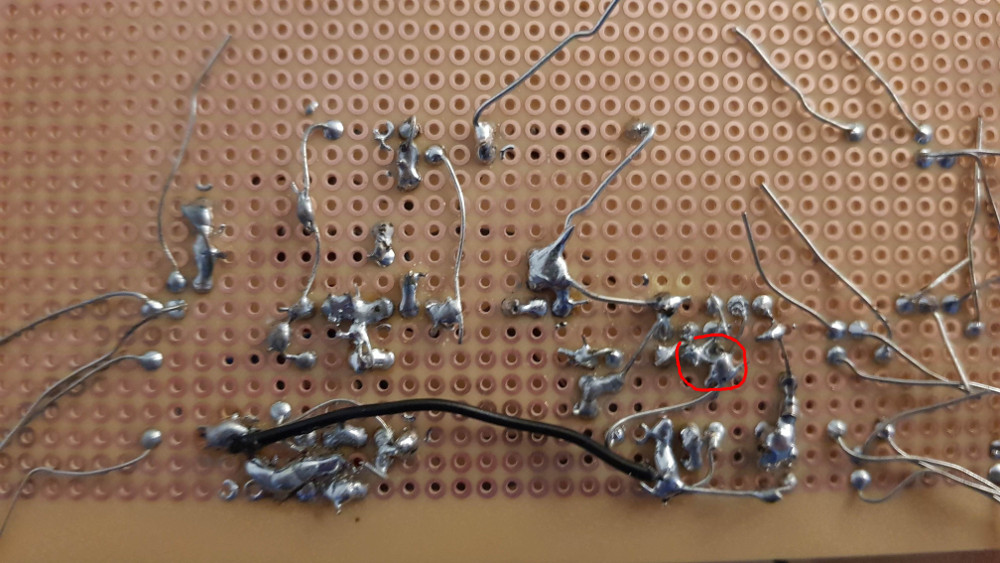I am in the process of building a theremin according to the EM Theremin article and Etherwave's circuit diagram as found in the hot-rodding document. I started with the fixed pitch oscillator and its tuning circuit and to my disappointment found that it does not oscillate.
Here is a picture of the component layout: https://imgur.com/LctzOZI.jpg It follows the layout of the EM theremin. Components that are part of the oscillator are marked. L6 is a fixed 47 µH inductor for testing purposes because I don't yet have a variable inductor. The circuit was powered by a dual lab bench power supply. The rather ugly solder is seen here: https://imgur.com/hz16NP1.jpg
Is there something apparent that prevents it from working? The connections have been checked for bad connections, shorts, and other errors. Does anyone know if the circuit is highly sensitive to stray capacitances caused by the solder?




